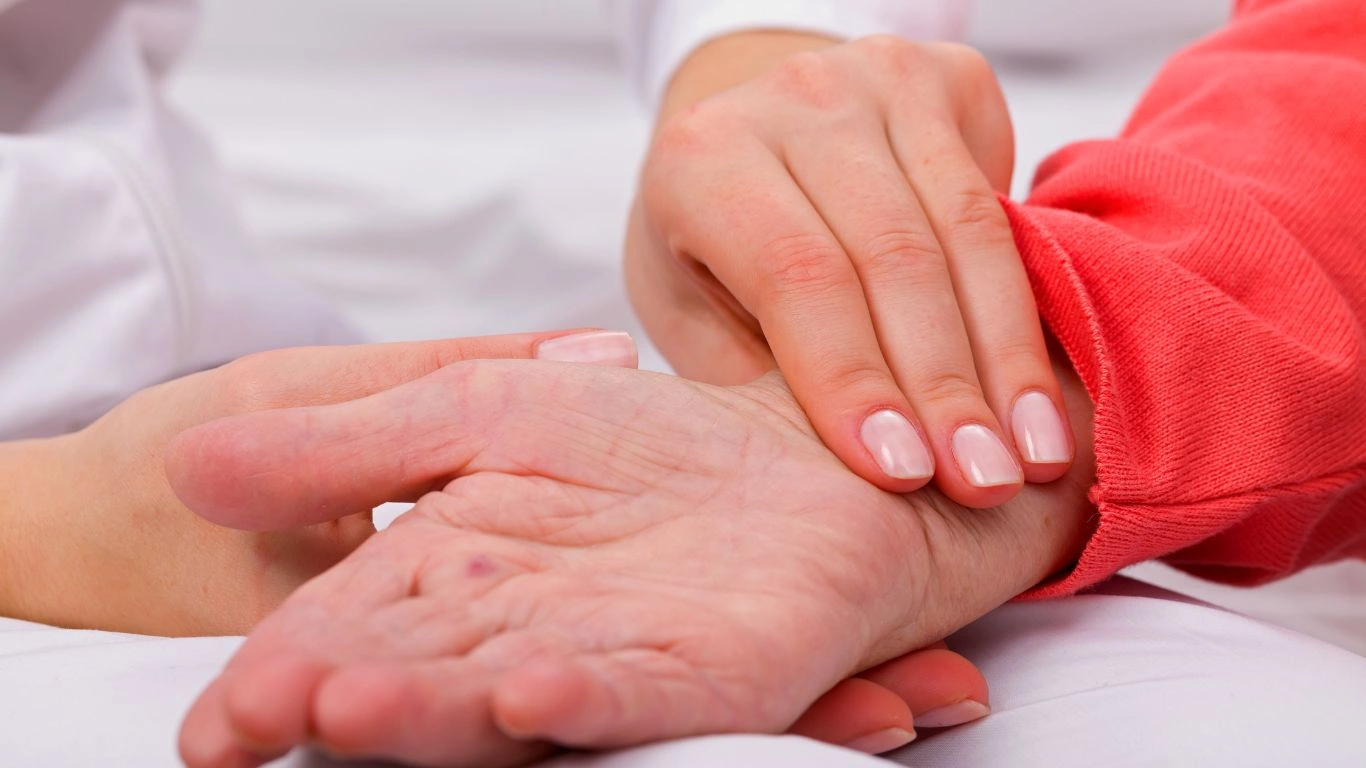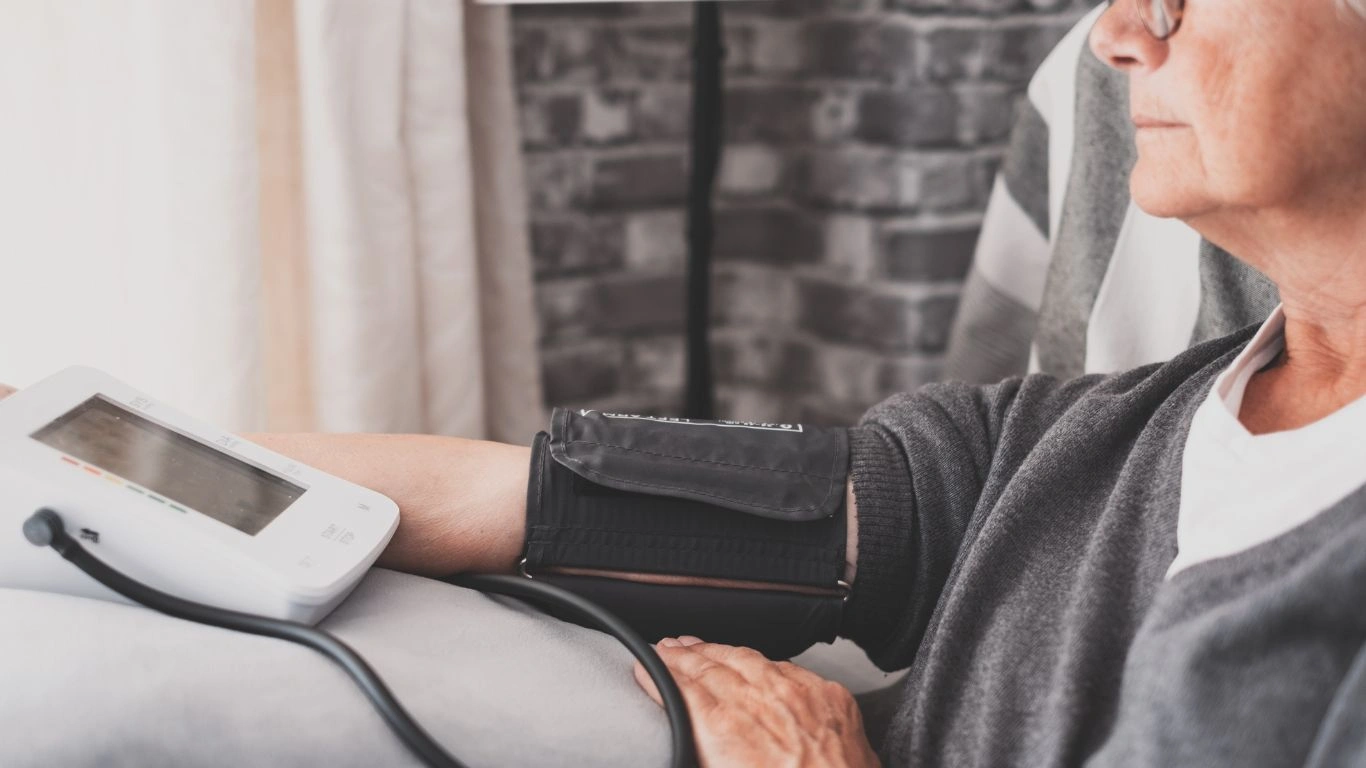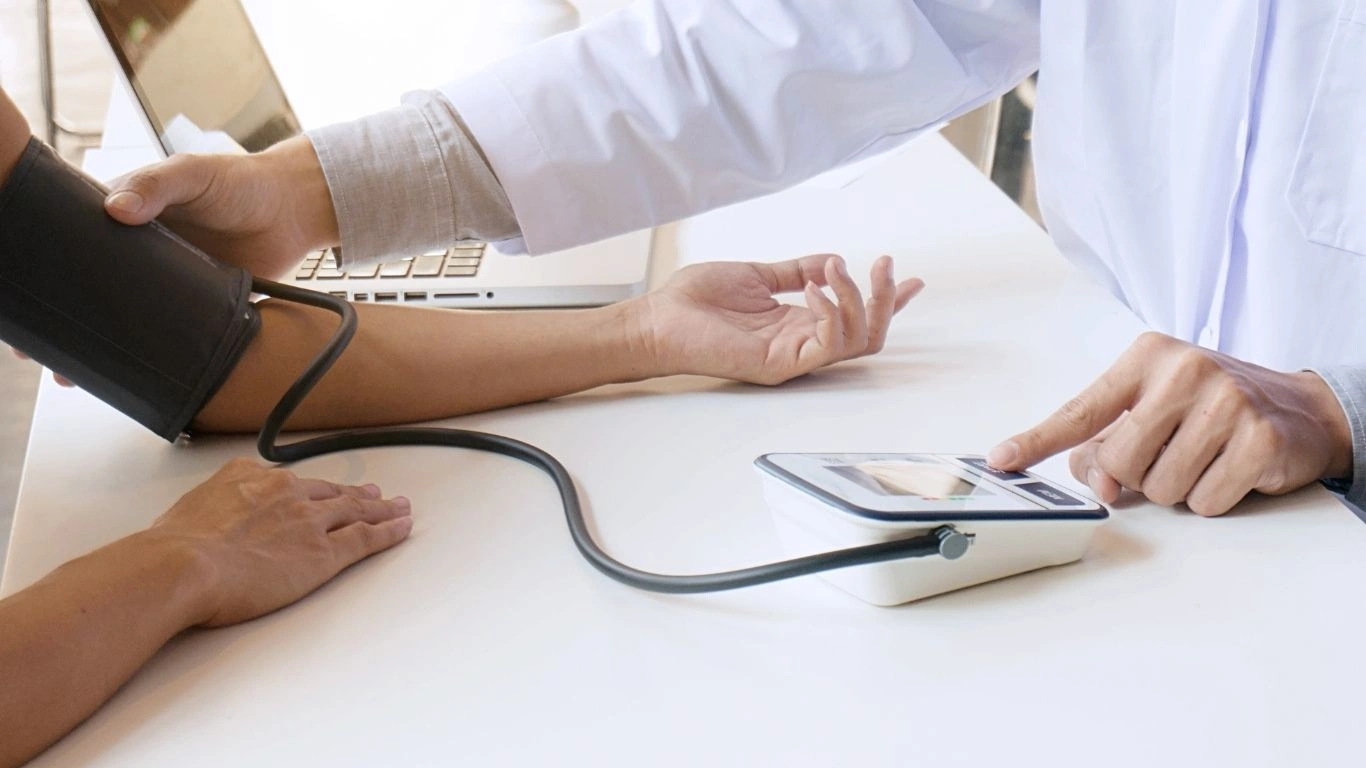Safely Exercise with Hypertension: Boost Heart Health Without Risks
So, you’ve been diagnosed with high blood pressure—hypertension—and your doctor (maybe someone like me!) told you that regular physical activity can help bring it down. But then comes the million-dollar question: how to safely exercise with hypertension without overdoing it? This is something I hear often in my clinic. Patients are either hesitant to start exercising at all or they go too hard too soon, which can actually backfire. Let’s clear the air and walk through how you can move your body safely and confidently, even with a hypertension diagnosis.
Understanding the Hypertension-Exercise Connection

Before we even lace up our sneakers, let’s talk about why exercise matters so much. When your blood pressure is consistently high, your heart is essentially working overtime. Over time, that strain can lead to things like heart failure, kidney issues, or even strokes. Scary, I know—but here’s the good news: physical activity acts like a natural antihypertensive. It helps relax blood vessels, improves circulation, and reduces the stiffness in arteries that contribute to elevated pressure.
Back when I started practicing, I remember a patient who was extremely reluctant to do any exercise at all. She told me, “Doc, I don’t want my heart to explode on the treadmill.” And hey, fair concern! But after we created a slow, tailored plan, she ended up falling in love with morning walks and saw her systolic BP drop by over 10 points in six months. That’s the kind of transformation we’re aiming for.
Let’s Get Real: The Risks of Doing It Wrong
We can’t ignore that not all exercise is good for everyone, all the time. With hypertension, the trick is balance. Pushing too hard, especially with isometric or very high-intensity workouts, can cause your blood pressure to spike temporarily. That’s why I caution folks to avoid jumping straight into things like CrossFit, sprinting, or lifting heavy weights until they have a stable base and a green light from their doc.
Here’s what can go wrong if you don’t approach exercise the right way:
- Sudden spikes in blood pressure: Especially with breath-holding or very strenuous lifting.
- Dizziness or fainting: Particularly in hot environments or if you’re dehydrated.
- Heart rhythm disturbances: Rare, but possible, especially if you have other heart conditions.
I once treated a man in his 50s who started HIIT classes after reading a fitness blog. No prep, no medical clearance. He ended up in the ER with a BP of 210/120. Don’t be that guy.
How to Safely Exercise with Hypertension: Core Principles

1. Start Low and Go Slow
This is the golden rule. If you haven’t been active, start with walking. A 15-minute walk around your neighborhood a few times a week can make a difference. Gradually increase the time and pace over weeks—not days.
2. Choose the Right Type of Activity
Aerobic exercises are your best friend when you’re managing hypertension. Think:
- Walking (the simplest and most underrated)
- Cycling at a comfortable pace
- Swimming
- Low-impact cardio like elliptical machines
Avoid: Powerlifting, sprint intervals, and long periods of breath-holding. These can all lead to sharp BP increases.
3. Monitor Your Body’s Response
How do you know if your workout is too much? Listen to your body. Signs that you’re overdoing it include:
- Feeling lightheaded or dizzy
- Excessive fatigue that lingers the next day
- Chest discomfort or palpitations
Keep a log—note your blood pressure before and after workouts, how you felt, and how long you exercised. Over time, you’ll start to see patterns and progress.
Pre-Workout Prep: Don’t Skip These Steps

One of the most common mistakes I see is people diving into workouts without proper prep. With hypertension, it’s important to do a few things first:
- Talk to your doctor: Especially if you’re on medication like beta-blockers or diuretics.
- Check your BP at rest: Don’t exercise if it’s above 180/110 without clearance.
- Warm up and cool down: These reduce the shock to your cardiovascular system.
I recommend a warm-up that includes 5-10 minutes of gentle movement, like slow walking or dynamic stretches. Your blood vessels get a chance to dilate, your heart rate increases gradually, and your body is primed for the work ahead.
And yes, hydration matters
Don’t underestimate how much dehydration can mess with your blood pressure. Especially if you’re on diuretics, your fluid balance is already a bit delicate. Keep water handy and sip throughout your workout.
Also, don’t ignore rest days. Rest is when your body actually adapts and recovers. Trying to exercise every day, especially early on, can backfire and lead to elevated BP or burnout.
Finding Your Exercise Rhythm: It’s a Marathon, Not a Sprint

One thing I always tell my patients is that consistency beats intensity—every time. When folks ask me how to safely exercise with hypertension, I emphasize that you don’t need to “go hard or go home.” That’s a gym myth. The real key? Establishing a sustainable rhythm that fits into your life and supports your blood pressure goals.
Some of my most successful patients aren’t the ones doing boot camps or spending hours at the gym. It’s the ones who build activity into their lives like brushing their teeth—regular, almost automatic. Walking the dog. Taking the stairs. Ten minutes of yoga before breakfast. These habits stack up in powerful ways.
Weekly Activity Goals for Hypertension Management
According to the American Heart Association (and from what I’ve seen firsthand in practice), adults should aim for:
- 150 minutes of moderate-intensity aerobic activity per week — think brisk walking, water aerobics, or dancing.
- OR 75 minutes of vigorous-intensity exercise — like jogging, if your doctor has cleared you for it.
- Plus 2 days of light strength training — using resistance bands or light weights.
Now, I know that sounds like a lot, especially if you’re starting from zero. But let me share what I often tell my patients: Break it down. That’s just 30 minutes, 5 days a week. And you can split it up — three 10-minute walks still count! Movement is movement.
What About Strength Training? Yes, But…

Strength training sometimes gets a bad rep in the hypertension community, and I get why. Lifting weights—especially heavy—can cause temporary spikes in blood pressure. But that doesn’t mean it’s off-limits.
If you do it smartly and start light, strength work can actually improve vascular health, increase muscle mass (which helps with metabolism and weight control), and reduce resting BP over time.
Tips for Lifting Weights Safely with Hypertension
- Use light weights with higher reps (e.g., 10–15 reps per set).
- Avoid breath-holding — this is crucial. It’s called the Valsalva maneuver, and it spikes BP fast.
- Focus on full-body compound movements like bodyweight squats, wall pushups, or resistance band rows.
- Rest between sets and monitor how you feel. No lightheadedness, no dizziness.
I had one patient, a retired teacher, who started with soup cans as weights. I kid you not. She’s now doing gentle resistance circuits three times a week and said her stamina during daily chores is the best it’s been in years. Small beginnings matter.
When to Exercise — And When to Hold Off

Timing can play a role in how your body responds to exercise, especially with high blood pressure. Most people do well exercising in the morning or early evening, but everyone’s different. I recommend you experiment and track how your BP responds to different times of day.
But here’s when you should not exercise:
- If your BP is above 180/110 — that’s your red flag. Sit tight and talk to your doctor.
- When you’re feeling ill, dizzy, or have chest pain.
- If you’ve missed your medications and your pressure is running high.
Also, be mindful of outdoor conditions. Exercising in extreme heat can be risky, especially if you’re on diuretics or other meds that affect hydration. Stick to climate-controlled environments or choose early morning or evening when it’s cooler.
Using Tech to Your Advantage
Technology has made it easier than ever to stay on top of your health goals. I’m a big fan of using wearables, especially for patients managing hypertension. You don’t need the fanciest smartwatch on the market—but even a basic step counter or heart rate monitor can give you useful feedback.
Helpful tech tools include:
- Heart rate monitors — help keep you in a safe training zone.
- BP tracking apps — you can log readings, symptoms, and even send reports to your doctor.
- Step counters — very motivating, especially when you set small daily goals.
One of my patients, a 68-year-old retiree, got his first fitness tracker last year. At first, he just wanted to see how many steps he was getting “by accident” throughout the day. Now he’s walking 8,000 steps daily — on purpose — and his BP meds have been halved.
Don’t Forget the Recovery Game
Here’s a piece many folks overlook: rest and recovery are just as important as the workout itself. When you exercise, especially if you’re new to it, your body needs time to repair and adapt. That’s when the magic happens—when you’re sleeping or resting, not while you’re sweating it out.
Recovery tips for hypertensive exercisers:
- Prioritize sleep — aim for 7–9 hours. Poor sleep raises BP.
- Stretch regularly — gentle stretching improves circulation and reduces stiffness.
- Hydrate and fuel well — balanced meals with lean protein, fruits, veggies, and plenty of water.
I sometimes call this “the quiet side of fitness” in clinic. You don’t see it on Instagram as much, but it’s what keeps the wheels turning behind the scenes. Your heart—and your blood pressure—need this phase just as much as the workouts themselves.
Final thought for now?
Don’t stress if your journey doesn’t look like anyone else’s. I’ve seen patients take weeks just to build up to walking 10 minutes without stopping. That’s still progress. The goal isn’t perfection—it’s consistency with compassion for your own pace.
Staying Motivated for the Long Haul

Let’s be honest — motivation can be a rollercoaster. Especially when life gets in the way, or progress feels slow. I see this all the time. One week a patient’s walking daily, logging steps, feeling proud… and then boom, work stress or family obligations knock them off track. That’s totally normal. The key is not to quit altogether, but to recalibrate and keep moving.
If you’re wondering how to safely exercise with hypertension long-term without burning out, here’s what I usually recommend in clinic:
1. Find an Accountability System That Works for You
For some people, this means a walking buddy or group class. For others, it’s a simple logbook or a weekly check-in with their primary care doc. I had a patient who posted her walking progress on Facebook — not for the likes, but because it kept her consistent. Every “You go, girl!” from her friends made her want to keep going.
2. Revisit Your “Why”
When it gets tough (and it will), remind yourself why you started. Whether it’s staying off more medications, having energy for grandkids, or just feeling stronger in your own skin — anchor into that. Write it on a sticky note. Put it on your fridge. Keep it visible.
3. Celebrate Non-Scale Victories
- Your blood pressure trend is improving.
- You’re sleeping better.
- Climbing stairs doesn’t leave you winded.
- Your doctor had to lower your meds — that’s a win!
These little victories build momentum. I’ve seen patients completely reframe their relationship with exercise by focusing less on aesthetics and more on how they feel. That’s the magic.
Hypertension and Exercise: Customizing by Age and Life Stage

Not all exercise advice fits everyone, and age plays a big role in what’s safe and sustainable. As someone who treats a wide range of adult patients, from newly diagnosed 30-somethings to folks well into their 80s, I can confidently say that your approach should evolve with you.
In Your 30s–40s:
This is often the “wake-up call” stage. People are still relatively resilient but may be juggling work, family, and stress. Great time to start building cardio routines and maybe dip a toe into strength training. I suggest prioritizing habits over intensity here.
In Your 50s–60s:
Mobility, joint care, and balance become more important. Don’t shy away from resistance training, just keep it gentle. Add stretching or yoga to help with flexibility. Also, this is a good time to start monitoring BP trends more closely if you haven’t already.
70 and beyond:
Focus shifts to preserving independence and avoiding falls. Chair yoga, water aerobics, resistance bands — these are gold. And yes, walking remains the undisputed champion. I’ve had 75-year-old patients clocking 5,000+ steps daily and thriving. Don’t underestimate your ability.
Common Myths About Exercising With High Blood Pressure
Let’s bust a few that I hear in my office all the time:
- “If I take medication, I don’t need to exercise.”
Nope. Meds manage the symptom; movement targets the cause. Think of exercise as part of your prescription. - “I can’t lift weights at all.”
Not true. You just need to do it properly — light resistance, no breath-holding, slow and controlled. You’d be surprised what resistance bands can do. - “My blood pressure goes up when I move, so I should rest more.”
Yes, BP rises temporarily during exercise, but regular movement brings down your resting numbers over time. The long-term benefits far outweigh the short spike.
When to Talk to Your Doctor or Specialist
Before you dive into any new routine — especially if it’s been a while since you’ve been active — check in with your primary care provider or cardiologist. Here’s when you absolutely should pause and consult:
- Chest pain or tightness with exertion
- Dizziness, especially during or after exercise
- Uncontrolled high blood pressure (consistently above 180/110)
- You’re on medications that affect heart rate or fluid levels
As a physician, I love when patients bring these questions to their visits. It shows they’re invested in their health. Don’t wait until something goes wrong — be proactive.
Helpful Resources for Hypertension and Fitness
If you’re looking for more support, here are some reliable go-tos I often recommend:
- National Institutes of Health (NIH) — credible, science-backed information on managing chronic conditions.
- Health.com — practical lifestyle tips and patient-friendly articles.
- Centers for Disease Control and Prevention (CDC) — excellent data on heart disease, hypertension, and prevention.
- American Heart Association — exercise guidelines, meal ideas, and live well plans tailored to heart health.
Disclaimer
This content is intended for informational purposes only and is not a substitute for personalized medical advice. Always consult your healthcare provider before beginning a new exercise program, especially if you have a chronic condition like hypertension. What works for one person may not be appropriate for another. Use common sense, listen to your body, and stay in regular communication with your doctor.
Thanks for reading, and remember — moving your body is one of the most powerful things you can do for your blood pressure, your heart, and your whole quality of life. You’ve got this.

Dr. Gwenna Aazee is a board-certified Internal Medicine Physician with a special focus on hypertension management, chronic disease prevention, and patient education. With years of experience in both clinical practice and medical writing, she’s passionate about turning evidence-based medicine into accessible, actionable advice. Through her work at Healthusias.com, Dr. Aazee empowers readers to take charge of their health with confidence and clarity. Off the clock, she enjoys deep dives into nutrition research, long walks with her rescue pup, and simplifying medical jargon one article at a time.






